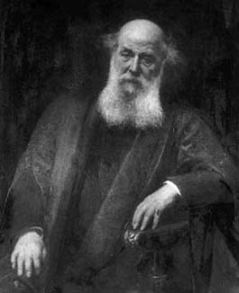Mathematical Careers
You don't have to be a 'genius' to enjoy mathematics and have a career in it...
 Joseph Malkevitch
Joseph Malkevitch
York College (CUNY)
Email Joseph Malkevitch
Introduction
If you are looking for a job, where do you look for employers who are seeking workers? One place to look years ago was in The New York Times, which had large numbers of "want ads," advertisements for positions to be filled. These advertisements were organized by "field." There were jobs for accountants, educators, and engineers. There were jobs for scientists listed: chemists, geologists, etc. but no jobs listed under mathematics. I have often wondered why this came about--perhaps because people who placed ads, based on their school education, had no idea what mathematicians did and, hence, no idea "when to call (or hire) a mathematician." Many people can understand what it means to be a mathematics teacher but if one does not teach mathematics, who else might hire someone who majored in mathematics in college? After a while I realized that even though very few ads mentioned mathematics majors, based on nearly all the "surround" verbiage for the kind of employees being looked for, many of these employers might well have been willing to hire mathematics majors for the jobs that did not explicitly mention mathematics. What follows are some thoughts related to this year's Mathematics Awareness Month theme: Mathematics Drives Careers.
There is, of course, a difference between a career and having a job. At many times in one's life one may need to take a job to earn some money. As a teenager one may take a job that has little meaning other than earning money; perhaps it is chosen because it is convenient for where one lives. Few people set their long-term goals based on these early experiences with the world of work. Many students are motivated by perceptions of where their talents lie, and sometimes by information that certain kinds of jobs are very remunerative and there may be shortages for people in these areas. If one is not happy with the work one does even if that work is very highly paid, perhaps one made a mistake in entering this line of work. Given the negative view that many people have about mathematics, some will be surprised that the satisfaction people who pursue careers in mathematics have has been very high in recent years.
Relatively few careers in mathematics are based on getting a doctorate degree in mathematics, and not all people who earn a doctorate in mathematics start as undergraduate mathematics majors. Here I will examine some career paths of various individuals whose work is highly mathematical but did not always have "credentials" in mathematics. Some of these people are perhaps seen more as "experts" in other fields than in mathematics itself. You don't have to be a "genius" to enjoy mathematics and have a career in it. Nor is the only entry point into mathematics a doctorate degree in mathematics or even a bachelors degree in mathematics. There have been many distinguished contributors to and users of mathematics who did not get a doctorate degree.
Bias and credentialing
The most visible practitioners of mathematics have earned a doctorate degree in mathematics. The earliest doctorate degrees date back to the Middle Ages, and were initially the domain of the Catholic Church. The offering of doctorate degrees in specific disciplines at specific universities in different countries has a complex history. In particular, this degree was not available to blacks, women and Jews in some countries until surprisingly recently. In fact, the distinguished mathematician James Joseph Sylvester was unable to take a Masters Degree at Cambridge unless he signed the Thirty-Nine Articles of the Church of England, which he refused to do. (Luckily for him, an arrangement was made for him to take his degree at Trinity College in Dublin based on his work at Cambridge.) Sylvester's father's name was Abraham Joseph. Sylvester initially used the name James Joseph and only started using James Joseph Sylvester prior to this application to Cambridge.
James Joseph Sylvester
Sylvester sought employment in the United States and spent time at the University of Virginia. Things did not work out for him there (he had trouble with the students) so he returned to England where he worked as an actuary which has been a popular career for people with mathematical talent to this day. Actuaries use mathematical ideas to price insurance products and, more recently, pensions of different kinds. Later he taught at the Royal Military Academy in Woolwich. Eventually he was offered an appointment at Johns Hopkins University, where he was part of the attempt to create educational opportunities at the doctoral level in America. Many people living in the U.S. seeking advanced degrees as recently as the last third of the 19th century went to Europe to study for advanced degrees in mathematics. Sylvester supervised 8 doctoral students at Johns Hopkins before returning to England at the age of 68 to take up the position of Savilian Professor of Geometry at Oxford (a position currently held by Nigel Hitchin and formerly held by such mathematical notables as John Briggs, John Wallis, G.H. Hardy and Michael Atiyah). Sylvester was able to assume this position because Oxford had dropped its restriction against having Jewish faculty.
More opportunities within mathematics have come to women and minorities slowly. Emmy Noether, whose birthday was recently celebrated with a Google Doodle, displayed immense talent in mathematics and is viewed as one of the greatest mathematicians of the early 20th century, but she had troubles even getting a higher degree in her native Germany.
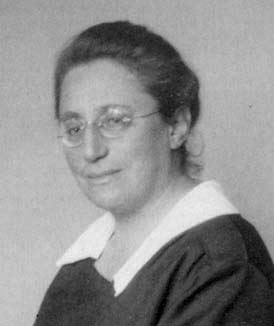
Emmy Amalie Noether
After she got an advanced degree she had trouble obtaining a paying job because she was a woman. With support from Hilbert she obtained a position at the University of Göttingen, where in her support Hilbert wrote: "I do not see that the sex of the candidate is an argument against her admission as privatdozent. After all, we are a university, not a bath house." She eventually got to supervise doctoral students. Ironically, one of the thesis students she supervised was Ernst Witt, who became an active member of the Nazi Party. Eventually Noether lost her job because of the Nazi "racial" laws. She made her way to the United States, where she obtained a teaching position at Bryn Mawr, where she supervised her final doctoral student, another woman. Sadly, Noether died from complications due to surgery at age 53.
Many American universities which offered doctoral degrees in mathematics had their first women doctoral students in mathematics surprisingly late. This site has a rich collection of resources about women in mathematics. In 2014 for the first time a woman, Maryam Mirzakhani, was awarded what many view as mathematics' most prestigious award, the Fields Medal. Increasingly, woman have been recognized for their accomplishments in mathematics. Similarly, blacks have struggled for access to and recognition for their accomplishments in mathematics. Here, too, important positive strides are occurring.
While prior to the 20th century there were many mathematical scholars who did not earn the highest of advanced degrees, in some countries, notably Germany, having advanced degrees was already common in the 19th century. Thus, it is intriguing that some individuals with very high visibility did not earn a doctorate degree. A good case in point is the career of Karl Weierstrass (1815-1897). Weierstrass is widely viewed as one of the giants of the part of mathematics known as analysis. Analysis is the branch of mathematics that "follows" calculus and which aims for understanding functions and their properties. In particular, Weierstrass looked at the idea of a sequence of functions and studied the properties of what such functions might converge to. Although much progress had been made in putting the "foundations" of calculus on a firm footing, Weierstrass pushed that agenda greatly forward. More than half a dozen important theorems and concepts have the Weierstrass name attached to them.
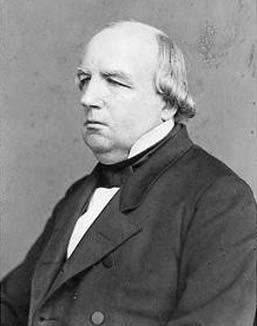
Karl Weierstrass
Yet, Weierstrass did not have a career initially as a university teacher or researcher. Instead he spent many years teaching at a gymnasium (a kind of high school in Germany for academically oriented students) and later a collegium, a religious learning institution that served students bordering on high school and college. Only later in his career, after being awarded an honorary doctorate degree by the University of Königsberg in 1854, did he apply for and get a university position. Sadly Weirestrass suffered from extensive medical problems relatively early in his life. In terms of his mathematical influence, he had 41 doctoral students and according to the Mathematics Genealogy Project more than 27,000 "doctoral degree" descendants. These include the distinguished algebraist Ferdinand Frobenius, the topologist Arthur Schoenflies, the analyst Hermann Schwarz, and Sofia Vasilyevna Kovalevskaya (1850-1891). She was one of the most distinguished women mathematicians of the 19th century, and almost surely her talents would have been lost to mankind but for Weirestrass' efforts on her behalf, which included his being her private tutor for many years.

Sofia Vasilyevna Kovalevskaya
Unlike Weirstrass, Kovalevskaya died at a young age, and had limited influence as a supervisor of doctoral students. However, her fortitude in pursuing the mathematics she loved has resulted in her being honored by a lecture series named for her sponsored by SIAM (Society for Industrial and Applied Mathematics) and AWM (Association for Women in Mathematics). Her story in persisting in becoming a mathematician has been a source of inspiration for many women and men alike.
Even in the 20th century there are individuals of tremendous influence within the mathematics community who did not achieve the credential of the doctorate degree. One of the most extraordinary of these individuals was Andrew M. Gleason, who during the academic part of his career spent much of his career at Harvard University.
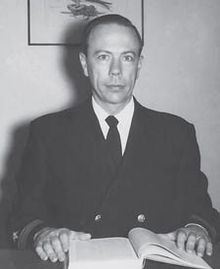
Andrew Gleason (Courtesy of Wikipedia)
Gleason was born in California, the son of a botanist. However, he grew up on the East Coast. After high school he started attending Yale University having "dabbled" on his own in studying calculus. He did not initially take mathematics courses in a systematic way but found himself inspired by various mathematicians at Yale including Einar Hille. Gleason participated while at Yale in the William Lowell Putnam Mathematical Competition. This competition, which has been run annually since 1938 by the MAA (Mathematical Association of America), was created by Elizabeth Lowell Putnam in honor of her husband, William Putnam. Teams from colleges compete in the Putnam Competition but individuals who do very well (top five) in the competition are also rewarded with the designation Putnam Fellows. Andrew Gleason was a Putnam Fellow for three different competitions from 1940 to 1942, one of only 20 people to achieve this distinction. There have been 8 people who were Putnam Fellows four times. The Putman has proved to be a way of identifying mathematical and scientific talent. Putnam Fellows include John Milnor, David Mumford, and Daniel Quillen, who won Fields Medals, and two winners of the Nobel Prize in Physics, Richard Feynman and Kenneth Wilson. Not surprisingly, this is a hard competition, and many people who love mathematics and who participate are often disappointed by very low scores. This can be very intimidating for some people and discourage them from pursing mathematics. Many people who don't have much skill at competitions and competition problems often are very creative mathematicians, solving important problems, making important new conjectures and other contributions to mathematics. Furthermore, you can have a satisfying career in mathematics whether or not you perform in mathematics competitions and do well in them.
Returning to Gleason's career, after graduating from Yale, he entered the Navy and was involved with the team of individuals who were working on breaking the Japanese naval codes. He also was involved with work on the German Enigma Codes. After the war Gleason was appointed to a position at Harvard but soon returned to work on codes during the Korean War. Eventually he returned to Harvard, where he was promoted regularly (despite not having a doctorate degree) and eventually was appointed to the Hollis endowed chair in Mathematics and Natural Philosophy. Gleason retired in 1992 but continued to be active both in mathematics and mathematics education ("Calculus Reform"). In 1996 he was awarded the Yueh-Gin Gung and Dr. Charles Y. Hu Distinguished Service to Mathematics Award by the Mathematical Association of America. This award is widely viewed as MAA's most prestigious award. Gleason's work in mathematics and mathematics education was extremely diverse. While I was a graduate student, one of the first seminar presentations I made was about the proof that Gleason gave of this remarkable result in the theory of finite projective planes:
A quadrangle Q of a projective plane is a set of 4 points (A, B, C and D) with no three on a line. The 6 lines A, B, C, and D meet at three additional points from A, B, C, and D and are known as the diagonal points of Q. If every quadrangle in a finite projective plane (every pair of distinct lines meet--there are no parallel lines) has collinear diagonal points, then the plane obeys the theorem of Desargues. When the diagonal points are collinear it has what is called a Fano configuration in the finite geometry involved.
When governments have recruited people to break codes not surprisingly, historically, they looked to people with expertise in languages and mathematics. If one is going to try to read a German or Japanese coded message one can be reasonably sure that the dispatches will not be in English! However, throughout history people with mathematical backgrounds and more recently computer science backgrounds have proved effective and influential in designing codes, breaking codes, and more generally in dealing with security issues in different settings. If you have an interest in cryptography and security issues, studying lots of mathematics will not do you any harm!
Comments?
Other entries to mathematical careers
While some distinguished mathematicians did not always get the highest credential--the doctorate--to launch their career in mathematics, other individuals have started their careers in a subject, sometimes viewed as far from mathematics, and they built their reputations for their mathematical work. Some of this came about because as mathematics has grown both in its theory and applicability, parts of mathematics that were born of the ingenuity of people who thought of themselves as mathematicians, their "intellectual babies," have found a home outside of mathematics departments for the most part. Good examples of this are mathematical programming and game theory. Mathematical programming involves solving optimization problems using mathematical tools. One has an objective, described by some function (which is linear, quadratic, or convex), and constraints, often linear, and one seeks to maximize or minimize the objective function subject to these constraints. Often one first has to show that there are feasible solutions, ones that satisfy the constraints, and then pick out the best of the feasible solutions. Mathematical programming including the important special case of linear programming finds extensive use in airline scheduling, oil refinery operations, resource allocation, and modeling the structure of molecules. The "father" of linear programming is often taken to be the mathematician George Dantzig in recognition of his work on the simplex algorithm, to solve linear programming problems. But today, people interested in mathematical programming might well go to a graduate business school for learning about mathematical programming. Similarly, John Von Neumann was an important pioneer of game theory, along with David Gale and Lloyd Shapley, but relatively little game theory is now taught in mathematics departments in comparison with what is done in economics departments.
The word "mathematical" has come into use as an adjective in such fields as mathematical sociology, mathematical psychology, mathematical economics, as complements to mathematical physics, mathematical chemistry, mathematical genetics and mathematical biology, which to some extent were domains where the use of mathematics was clearer earlier in the history of the way theoretical mathematics and its applications interacted.
James Coleman (1926-1995) is an example of someone whose career made significant use of mathematics but did not major in mathematics.
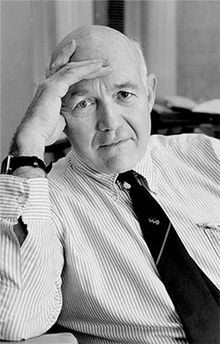
James Coleman (Courtesy of Wikipedia)
His undergraduate degree, earned at Purdue University in Indiana, was in chemical engineering. He then went on to Columbia University, where he earned his doctorate (1955) in sociology. While at Columbia he interacted with Paul Lazarsfeld, a sociologist, who had earned a doctorate in Europe for a thesis related to the work of Albert Einstein. Lazarsfeld, despite his mathematical background, for the most part followed sociology as a career path. While at Columbia he was involved with the Bureau of Applied Social Research (which closed in 1977). Not only did Lazarsfeld influence Coleman with regard to the importance of mathematics, but Lazarsfeld's son, Robert Lazarsfeld, has had a distinguished career in theoretical mathematics (algebraic geometry) at the University of Michigan and more recently at Stony Brook.
Coleman is well known for his important books, An Introduction to Mathematical Sociology (1964) and Mathematics of Collective Action (1973), but is most famous for the role he played in the aftermath of the Brown vs. Board of Education of Topeka Supreme Court case of 1954. Coleman helped develop data driven insights that showed how "separate but equal" was not "equal" but hurt children. The 1966 so-called Coleman Report, which grew out of the Voting Rights Bill of 1964, addressed educational policy issues by using a sample of 650,000 students to understand differences in educational achievement of children.
There are other examples of people who pursued mathematical careers outside of academic mathematics departments but made significant contributions to mathematics along the way. The career routes are very different, ranging from starting as an undergraduate mathematics major but then making contributions in fields such as economics or starting off in economics and then doing important work in mathematical economics, often with results of theoretical importance within mathematics as part of their work. As an example of two important contributors to issues of fairness, games, mathematical economics and mechanism design, let me consider the careers of the two Nobel Memorial Prize winners in economics--Kenneth Arrow and Eric Maskin.
While probably described today as a mathematical economist, as an undergraduate Kenneth Arrow was a mathematics major. Arrow attended City College, an independent four-year college when Arrow attended but now a part of the City University of New York. City College is located in Manhattan, not far from Columbia University where Arrow did his graduate work. Intriguingly, while at City College, Arrow also received a Bachelor of Science in Social Science degree.
While Arrow finished his graduate work at Columbia in economics, he initially considered continuing his mathematical work from undergraduate school at Columbia. It appears that it was Harold Hotelling, who was involved with economic and statistics (he taught statistics to Milton Friedman) while at Columbia, who encouraged Arrow to make this change.
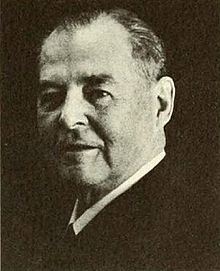
Harold Hotelling (Courtesy of Wikipedia)
Hotelling himself had a fascinating career having gotten his doctorate at Princeton in mathematics from Oswald Veblen. Hotelling eventually left Columbia University to help set up the statistics program at the University of North Carolina (Chapel Hill). Arrow completed his doctorate in 1951, and his thesis was entitled: Social Choice and Individual Values. Later Arrow published his thesis as a book, with the same title, which in essence led to the field known as social choice, a branch of both economics and mathematics. In this extraordinary work, Arrow showed that if one had individuals who provided rankings (ties allowed) of three or more alternatives, there was no decision-making method based on the "ballots" the individuals provided for how to rank the alternatives for "society" that obeyed some simple fairness rules (axioms). This result, now known as Arrow's Impossibility Theorem, has resulted in a tremendous flowering of interest of both a theoretical and "applied" kind about decision making, elections, and fairness issues. Eventually this work, and it is a small portion of Arrow's tremendous influence in mathematical economics, won him a share of the Nobel Memorial Prize in Economics for 1972. He was also the doctoral thesis supervisor (or among the supervisors) of these winners of the Nobel Memorial Prize in Economics: Eric Maskin, John Harsanyi, A. Michael Spence and Roger Myerson. All of these individuals had a complicated interdisciplinary background in the work that won them the Nobel Memorial prizes and the many other prizes they have received. Spence, for example, studied philosophy at Princeton, mathematics at Oxford, and economics at Harvard.
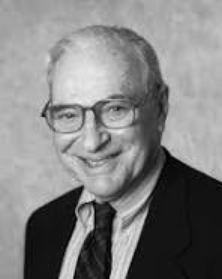
Kenneth Arrow (Courtesy of Wikipedia)
Although Arrow is currently an emeritus professor of economics and operations research at Stanford University in California, he spent a large part of his academic career with ties to both the Applied Mathematics Department and Economics Department at Harvard. Arrow was the advisor or joint advisor of at least 15 doctoral students at Harvard, Stanford, and MIT. He was co-advisor of the distinguished operations researcher Harvey Wagner along with Robert Solow at MIT.
A common adage is "like father, like son." This notion is usually applied to biological fathers and their sons, and here one thinks of the Bernoulli family, and George David Birkhoff and his son Garrett Birkhoff. But mathematical talent, like musical talent, is often seen in "student of" lineage in addition to biological lineage. One can see fascinating patterns in "mathematical descent" by looking at the information available through the Mathematical Genealogy Project, which attempts to trace the important influence of different mathematicians by doctoral thesis advisor. In some countries like Great Britain the doctorate degree does not go back as far as it does in countries like Germany and Italy. For someone like Arthur Cayley, who had no doctoral thesis advisor because he did not get a doctorate, the Mathematical Genealogy Project will list a person (or people) of influence for that individual (e.g. Cayley's private coach, William Hopkins). Cayley initially took degrees in law and only later pursued mathematics. Recently, in addition to the Mathematical Genealogy Project, a more general project of this kind Ph.D. Tree, has emerged.
Here is some more information about the career of one of Kenneth Arrow's academic sons--Eric Maskin.
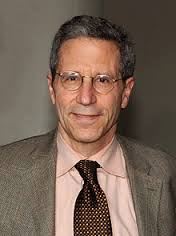
Eric Maskin (Courtesy of Wikipedia)
Like his doctoral thesis advisor Kenneth Arrow, Eric Maskin studied mathematics as an undergraduate. However, he continued with his doctoral studies in applied mathematics at Harvard under Arrow's direction. His doctoral thesis was entitled "Social Choice on Restricted Domains," so one can see the interest in economics and game theory during his graduate school days. After being a student at Harvard, Maskin went to Cambridge University for postdoctoral work at Jesus College. He was on the faculty at MIT from 1977 to 1984 but returned to Harvard from 1985 to 2000. From 2000 to 2011 he was at the Institute for Advanced Study in the School of Social Science. He left IAS to rejoin the Harvard faculty in 2012. Like Arrow before him, Maskin has supervised the doctoral thesis of a Nobel Memorial Prize winner--Jean Tirole, whom Maskin advised while he was on the faculty of MIT. Maskin has had at least had four other doctoral students, and he has academic grandchildren, including Scott Kominers, who included among his doctoral thesis advisors at Harvard, Alvin Roth, another mathematical economist who won a Nobel Memorial Prize in Economics! Among Maskin's most important contributions are his work on mechanism design. Mechanism design is an area of research on the border of mathematics and economics which is concerned with achieving specific goals by getting the "players" in the situation to provide truthful information because doing so is in their best interest. For example, the work of William Vickrey on auctions showed that having a sealed bid auction where the winner of the auction was the person who made the highest bid, but the winner would only pay the amount bid by the second highest bidder, provides no incentive for the bidders to misrepresent their true feelings about the value of the items being auctioned. Though "Vickrey Auctions" had been used to auction stamps prior to his work, Vickrey made the game theory analysis to clarify the tradeoffs for using this type of auction. Maskin has worked in auction theory and other parts of game theory with the goal of increasing the benefits to society. Two important notions in game theory are Nash equilibria (where players who unilaterally change course can't do any better) and Pareto Optimality (there are no outcomes where all players are better off). Maskin studied how to design systems where the Nash Equilibria are Pareto optimal.
Perhaps no subject outside of mathematics other than physics has benefited as much as economics from people with a mathematical bent. Publicity for mathematics' role in economics has accelerated since 1969 when the Nobel Memorial Prize was created in the area of Economics. While sometimes called the Nobel Prize in Economics, it was not one of the original prizes that Alfred Nobel created in his will and were awarded for the first time in 1901. From the beginning of these prizes honoring Nobel in economics there was some concern with how much attention should be given to mathematical work in economics. While some people argued how important mathematical work had been for economics, others argued that mathematical economics contributed little to day-to-day insights into what was going on either in macroeconomics or in microeconomics. Others pointed to mathematical programming and the dramatic effect it had on the daily practice of business if not on "economics" per se. Over the years there have certainly been many winners of the Nobel Memorial Prize whose work was deeply based on mathematics.
Part of my goal in the discussion above is to show that people whose interests are not specifically in STEM fields have a reason to pursue careers that are rooted in mathematics. Whereas 100 years ago the domain in which an undergraduate degree in mathematics was helpful tended to be centered around engineering and the sciences, this is no longer true. There are even examples of people who have done undergraduate work in the humanities who have had careers that involved mathematics.
In some ways mathematics resembles philosophy but in other ways philosophy seems rather distant from mathematics. Yet there have been several people who majored in philosophy either in graduate or undergraduate school who have made significant contributions to mathematics. The case of philosophy is especially interesting because there are some who consider philosophy among the more rarified parts of the humanities and might not assume some mathematical connection.
A part of mathematics itself is devoted to what is called the philosophy of mathematics. This part of mathematics deals with issues of logic, the nature of mathematics, what constitutes proof in mathematics, the nature of mathematical "truth" and how mathematics gets used in the world outside of mathematics. Many mathematicians contributed directly or indirectly to this branch of mathematics. Examples include George Cantor, Gottlob Frege, Bertrand Russell, Kurt Gödel, and many others. However, below I provide an interesting example which is more recent. The number of students who major in philosophy has never been large. While there is fluctuation in the subjects students choose as majors that can change significantly due to job availability as reflected by trends in the economy, many majors, as a portion of the growing number of Americans who get higher education, have had relatively stable numbers.
However, I would like to comment on people who studied philosophy in the usual sense in their career training but who either became mathematicians or made important contributions to mathematics via their careers. A good example of such an individual is Patrick Suppes, who died in 2014. Suppes was born in Oklahoma, went to college initially at the University of Oklahoma but eventually finished college at the University of Chicago where he received a degree in meteorology. After serving in the military during World War II he entered Columbia University as a graduate student in philosophy. His dissertation, completed in 1950, was supervised by the philosopher of science Ernest Nagel. The title of his thesis was: The Problem of Action at a Distance. He spent most of his academic career at Stanford University where from 1959 to 1992 he directed the Institute for Mathematical Studies in the Social Sciences. At the time of his death he was emeritus professor of philosophy at Stanford. His scholarly works include a huge range of subjects ranging from education, computer learning, and psychology, to the mathematics of measurement theory. He had at least a dozen doctoral students, whose thesis topics included a very wide range of subjects. For example, Shirley A. Hill, who finished her doctorate degree under Suppes's direction in 1961, wrote a thesis entitled: A Study of the Logical Abilities of Children. Shirley Hill went on to become a president of the National Council of Teachers of Mathematics.
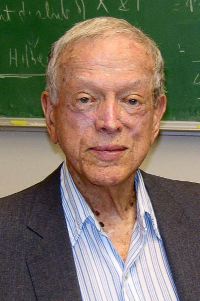
Patrick Suppes (1922-2014)
(Photograph courtesy of Stanford University and Michelle Nguyen)
Whatever major a student selects, including mathematics, taking mathematics courses opens up a wide range of careers. This includes majors in the information sciences and computer science. Computer science was not even available as a major until 1962, at Purdue University, and took some years to be widely offered. The first doctorate degree in computer science was awarded from the University of Pennsylvania in 1965. As you participate in and celebrate Mathematics Awareness Month, keep in mind the tremendous opportunities for varied future careers that mathematics majors, and those who take mathematics courses as part of a minor, interdisciplinary program, or just as elective courses, allows.
Comments?
References
Albers, D., Mathematical people: Profiles and interviews. Birkhauser, Boston, 1985.
Albers, D. and G. Alexanderson, C. Reid (eds.), More mathematical people: Contemporary Conversations. Harcourt, Jovanovich, Boston, 1990.
Brush, L., Encouraging girls in mathematics: The problem and the solution. Abt Books, 1980.
Casazza, P, and S. Krantz, R. Ruden, (Eds.), I, Mathematician, Mathematical Association of America, Washington, 2015.
Cook, M., Mathematicians: An Outer View of the Inner World, Princeton University Press, Princeton, 2009.
Sterrett, A., (ed.) 101 Careers in Mathematics, Mathematical Association of America, Washington, 2014.
There are many web sites that deal with different aspects of careers in mathematics. Here is a small sample:
http://www.ams.org/careers/
http://www.maa.org/careers
http://www.careercornerstone.org/math/math.htm
https://sites.google.com/site/awmmath/awm-resources/career
https://www.discoverdatascience.org/resources/exploring-a-career-with-numbers
http://www.msri.org/ext/CareersInMathematics.html
http://www.coolmath.com/careers
http://www.ams.org/employment
http://www.siam.org/careers/
http://www.amstat.org/careers/index.cfm?fuseaction=main
https://www.informs.org/Build-Your-Career/Consider-an-Analytics-OR-Career
http://www.math.cornell.edu/m/Undergraduate/Major/whatcando
Those who can access JSTOR can find some of the papers mentioned above there. For those with access, the American Mathematical Society's MathSciNet can be used to get additional bibliographic information and reviews of some these materials. Some of the items above can be found via the ACM Portal, which also provides bibliographic services.
 Joseph Malkevitch
Joseph Malkevitch
York College (CUNY)
Email Joseph Malkevitch


 Joseph Malkevitch
Joseph Malkevitch